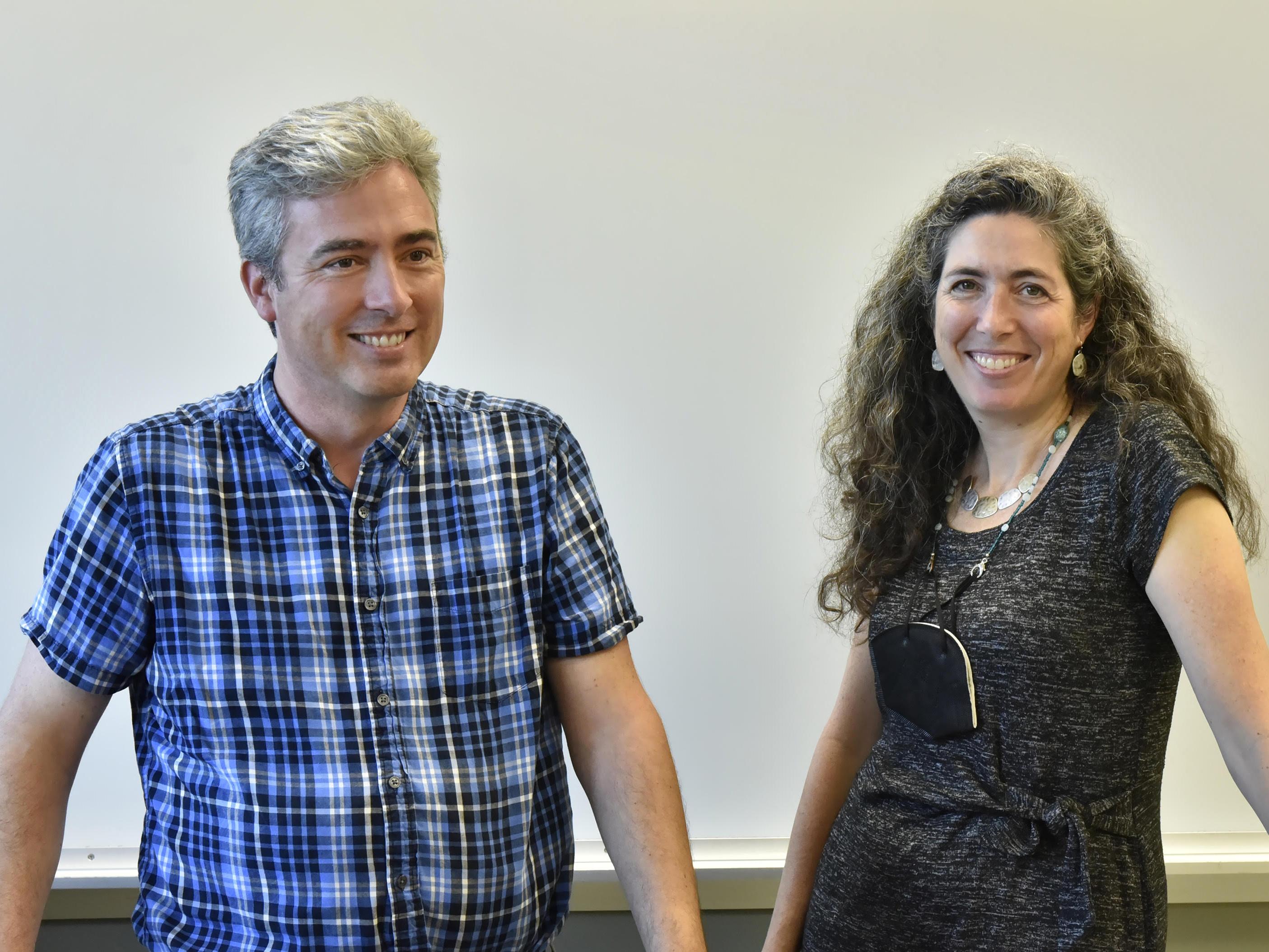SUNY Oswego history faculty members Bill Murphy and Gwen Kay recently attended a National Endowment for the Humanities seminar examining and planning for the future of history education.
While historians spend much of their time teaching in the classroom, researching in archives and writing, SUNY Oswego history faculty members Gwen Kay and Bill Murphy recently joined 14 other SUNY scholars in the Adirondacks as part of a federally funded effort to reimagine the U.S. history curriculum at Oswego and across the SUNY system.
Through a Humanities Initiative grant funded by the National Endowment for the Humanities, these scholars spent nearly a week in late July at SUNY Cortland’s Camp Huntington, a National Historic Landmark site on Raquette Lake. The grant supported costs for attendance.
SUNY Cortland professors Kevin B. Sheets and Randi Storch led this project and the summer gathering where scholars participated in a week-long faculty study group focused on the late 19th-century period often described as the Gilded Age and Progressive Era.
“It’s an area of interest and an area that we teach,” Murphy said. “For all of us there, this era is something that comes up in our teaching or informs our teaching in some way.”
“The more engaged we are in the field, the better we are as teachers,” Kay said. “Having a person talking about the history of disability research made me realize that this is something we need to incorporate more.”
“We all fall into patterns of how we teach things and this was this wonderful opportunity to learn about new perspectives and what other people are doing,” Murphy said. “It showed me ideas I had never thought about incorporating, such as bringing in more environmental history, for example.”
Natural connections
Environmental history was one of the planks of the discussions, buttressed by the sessions unfolding in a historic setting as well as in a landmark location that was the first of the “Great Camps” in the Adirondacks. The trend toward these camps and the media coverage influenced design (such as Adirondack chairs) and, in bringing prominent families and thinkers into greater contact with nature, helped lay the foundation for greater environmental awareness.
Kay and Murphy were joined by SUNY colleagues and two visiting history scholars. Kristin Hoganson of the University of Illinois at Urbana-Champagne and Rebecca Edwards of Vassar College led workshops during the week.
But they said that their time outside the workshops, in informal discussions and activities, proved additionally fruitful.
“It was a marvelous opportunity to have these conversations,” Murphy said. “The formal sessions were great but a lot of time around it, whether hiking or walking or discussing similar interests and problems that come up while teaching, provided an educationally stimulating environment. We found some great ways to frame some things.”
The project’s goals include developing new courses within SUNY and revising existing courses to better reflect the current state of the field.
In the second year of the grant, participating faculty will develop outreach efforts to local school districts across New York. They will provide professional development opportunities for middle and high school social studies teachers.
The project will also produce a book and companion website designed to help teachers, community college instructors, and college professors incorporate recent scholarship and best teaching practices into their courses.
Since 2012, Sheets and Storch have received more than $1 million in funding from the NEH to run professional development workshops for K-12 teachers. “Re-Placing the Gilded Age and Progressive Era” is their first grant focused on college instructors.
Calling it “one of the most rewarding professional experiences I’ve had,” Murphy said the sense of place brought home big ideas, such as the impact of technology on wildlife and how technology and the natural world intersect.
“In the Gilded Age and Progressive Era, you really saw things speeding up,and this gave me a new way of looking at it, and a good way to express this to my students,” Murphy said. “It’s a gift that keeps on giving in many ways.”
“Our teaching will definitely be different because we heard new ideas and we did activities that never occurred to us to do before,” Kay said. “It’s great to attend an event and keep saying to yourself, ‘wow, we should do that in class.’”




